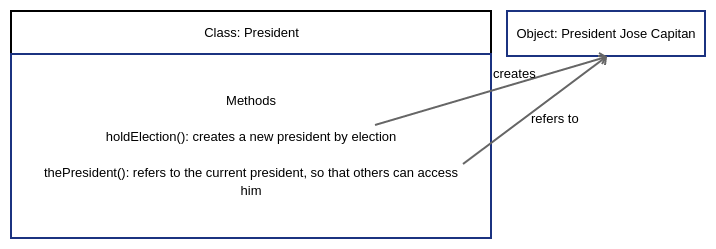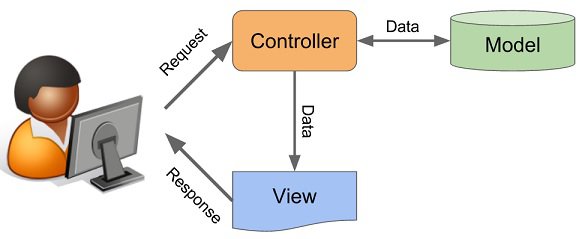What is the difference between purchasing and assembling DIY IKEA furniture vis-a-vis hiring a carpenter to build your furniture for you? In the second case, you are using the builder pattern. Continue reading “Design patterns: Builder pattern”
Tag: design patterns
Design patterns: State pattern
You probably know that a pressure cooker cannot be opened when it is very hot with plenty of steam built up inside. If you yank at the weight, it will protest with a loud hiss. But there are no problems opening the same cooker either before cooking or after it has completely cooled down. How can the same apparatus behave differently under different conditions for the same procedure: opening the lid? Software engineers will say that the cooker is using the state design pattern. Continue reading “Design patterns: State pattern”
Design patterns: Null object
After treating Adil, his doctor prescribes medicines in a complicated dosage. There are two medicinal tablets, one green and one red. The green medicine is to be taken 3 times in the coming week: Monday, Thursday and Saturday and the red one, 4 times: Monday, Wednesday, Friday and Sunday.
As Adil leaves, the doctor hands him two strips of medicine: 7 green tablets and 7 red ones. Adil is confused. He asks, “7 each? But doesn’t it call for 3 of these and 4 of those with a schedule?”. To which, the doctor replies. “How can I be sure that you won’t forget the complicated schedule? That’s why I have given you 7. Have one of each every day.” Adil is aghast. “But… isn’t that over-dosage?” “No, it’s not. 4 of the green tablets are simply mint candies. 3 of the red ones are strawberry candies. Inside the strips, the real tablets are interspersed with identical looking candies as per your dosage schedule. You don’t have to worry. Just habitually have one tablet of each colour every day. Start from the top of each strip.”
Brilliant! The doctor took a complex decision-making process away from Adil and just let him build a simple habit: one green tablet and one red tablet every day. The real tablets will fight against the illness that Adil approached the doctor with. The candies are there to simply … do nothing! In design pattern parlance, the doctor just used the Null Object pattern. Continue reading “Design patterns: Null object”
Design pattern: Flyweight
Adam is a cunning lad. He has been double-dating Elina and Carina. However he has identified himself with different names to each of them. Elina knows him as Adrian and Carina knows him as Boris. Is Adam cheating? Well, Adam begs to differ. He says life is short and he is a limited resource, only one person. Why not have fun with two girls at a time? Inside himself, he is always the same Adam. But he switches to two different personalities for the sake of Elina and Carina, by changing his external behaviour. Morally questionable, no doubt. But he is a fine specimen of the flyweight pattern. Continue reading “Design pattern: Flyweight”
Design patterns: Object pool
What do car rentals and libraries have in common? They temporarily lend resources only as long as someone needs them and then take them back so that someone else can use them. In object-oriented programming, such a system is called an ‘object pool’.
Design patterns: Singleton
In object-oriented programming, design patterns solve challenges that occur in the world of software in the form of recognised patterns. We start with a commonly occurring pattern called the singleton design pattern. You will see equivalent examples from the real world to make things simpler to understand.
An analogy for singleton pattern
Let’s imagine a country named ‘My Native Land’. ‘My Native Land’ is ruled by a single person at the helm. The citizens call him/her the president. Other countries approach this country through him/her. The president is chosen by a public election, from among qualified candidates.
Citizens cannot simply proclaim themselves to be the president at their own will. Nor can they simply appoint their dog, their neighbour, their grocery store owner or their village headman as the president. The only way to choose a president is with a nation-wide election.
There can be only ONE actively serving president at one point in time. The current president gets to remain at the helm until the next election, after which only a victory will get him re-appointed. Otherwise, he/she will have to relinquish the seat to the newly elected candidate.
The designation named president did not exist forever. The role was created at some point in time. Probably when My Native Land embraced democracy. There was NO serving president before that. Someone was appointed for the first time, either through policy or through an inaugural election.
So, what’s the singleton pattern?
Drawing parallels from the presidential example, we should now define the singleton pattern. Here are the features of a singleton pattern.
- There is a class (blueprint) named President. Only one object from the class can be present in the software at a time (similar to only one president for the country analogy). If you need a refresher about classes, objects and instances, please check this post.
- Only one place in the software (like the nation-wide election for a president) can create an object from the class. This place must ensure that only one object created at a time. If there are no objects of the class, then one is created (like the first president when democracy was embraced). Thereafter, if an object needs to be created, it should replace the old one. All references to the old object are lost (the old president stepping down for a new one).
- Barring this single point (election for president), there should be no other way to create an object from the class (e.g. citizens informally crowning themselves or choosing their unqualified neighbour as their president).
- Referring to the class automatically refers to the single instance made out of class. For instance, if a person named Jose Capitan is the current president, then he is simply referred to as ‘The President’ or ‘Mr. President’. This saves the effort of remembering and calling every president by his/her name every time the person in charge changes.
Example of singletons in computer programming
Singletons are commonly used to access your computer’s hardware efficiently. Your phone camera is a good example. What would happen if every app were to create an object of the Camera class and try to access the camera simultaneously, not knowing that other apps also want it? It would be chaos.
Instead, your phone’s operating system dictates the creation of just one Camera object using the Camera class. This object speaks directly to the camera hardware. None of the apps are allowed to create their own Camera objects. They can only refer to the Camera object created by the operating system.
When the phone boots up, there is no Camera object. As soon as the operating system detects your camera hardware, it creates the singleton Camera object for the first time. A new Camera object is only created if the existing camera object crashes or if the user is given a way to switch off the camera hardware and switch it on again. The old Camera object will be deleted and a new one created in its place.
Conclusion
Singleton pattern allows you to safeguard important resources for which a single point must be responsible. It protects you from the chaos that would happen if multiple points try to assume that responsibility.
Further reading
- Book: Head first design patterns (buy on Amazon.in | Amazon.com)
- Blog post: Design Pattern – Singleton Pattern by Tutorials Point
- Blog post: Singleton by Refactoring Guru
- Blog post: Singleton Design Pattern by Source Making
Streamline your system with the MVC model
You know the local grocery shop on the same street as your home. There is one shopkeeper, also the proprieter, who takes care of business. You go in and he smiles as you greet each other. You tell him what you want. He personally goes to the shelves and brings the stuff back to you. If it isn’t available, he’d tell you that too. After all the items you wanted are in your shopping bag, you hand the shopkeeper his due money, which he takes with a smile. After greeting each other once again, you leave.
This shopkeeper has it easy, even though he does all the work by himself. This is because he has simplified his business by making sure that he serves a small community. He has inventory that he can count on his fingers and only enough customers that he can personally deal with. What if he were to take orders over phone too? He’d have to manage delivering those items too. What if he were to serve customers from the entire city? More work for him. Very soon, that friendly smile on his face will disappear and he will feel an unquestionable need to split his role at the shop to multiple persons he can employ and manage. Continue reading “Streamline your system with the MVC model”







